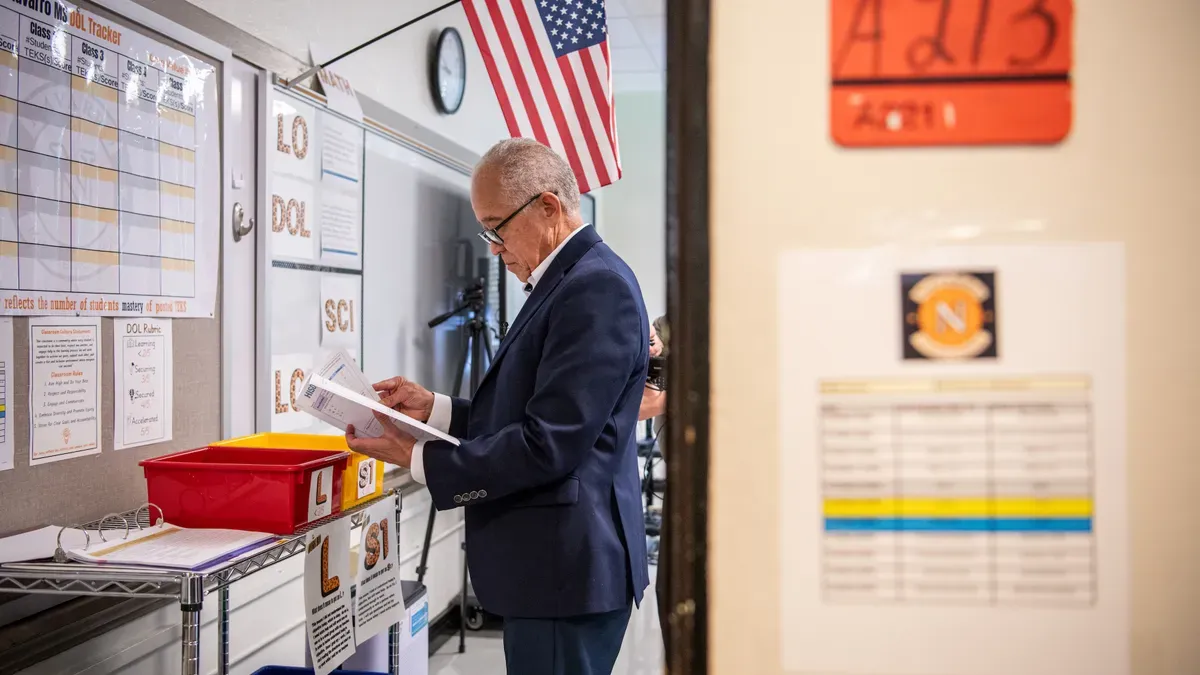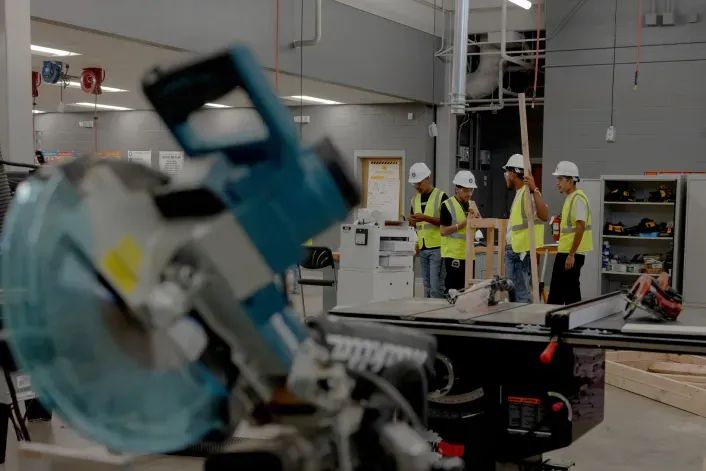|
|
 |
|
| CASE Report
Smart Brevity ®
count: 4.5 mins...1137 words
CASE is a collective of Houstonians committed to ensuring every student within Houston Independent School District (HISD) has the opportunity to receive a high-quality education.
If you would like to continue receiving updates, opt-in here.
|
|
Miles Explains “Wholescale Reform”
 Houston ISD’s challenges are not unique - most large, diverse, urban school districts suffer from achievement gaps, underinvestment, and enrollment declines. However, HISD’s Superintendent Miles believes he has the blueprint for how best to tackle these challenges, and the key ingredient isn’t a particular policy or rule, but a philosophy: Go big.
Superintendent Miles credits his strategy of “wholescale systemic reform” with HISD’s significant academic gains, rather than piecemeal, incremental reform that is politically safer, but ultimately less effective in driving improved student outcomes.
Superintendent Miles laid out his strategy of wholescale systemic reform for Lessons in Leadership, linked here.
Wholescale Systemic Reform
looks at six components and substantially changes some of the underlying principles:
-
Unique Instructional Model
: “This combines grade-level instruction with scaffolds and a highly differentiated model of instruction.”
-
Quality of Instruction
: “Instruction is key for us. We do a lot of on-the-job coaching. We do a lot of short spot observations and immediate feedback. We do a lot of training on what grade-level instruction looks like for principals and teachers and executive directors. We insist on that continuous improvement mindset.”
-
High-quality instructional materials
: We have designed our own curriculum for the wholescale systemic reform. We call it NES, New Education System. For those 85, and now 130, [NES] schools, we have our own curriculum, which means we also provide the teacher with the PowerPoint, the quizzes — or what we call “demonstrations of learning” — the lesson objective, the differentiated assignments. They’re tightly aligned with the standards, and they’ve been vetted.
-
Staffing
: “Our staffing model’s a little bit different. We have teacher apprentices, we have learning coaches, we have smaller class sizes. And then we have just a lot of focus on ensuring that anybody who steps in the classroom, whether it’s a teacher apprentice or learning coach, is prepared to teach well — even if the teacher is absent that day or goes on long-term maternity leave or something like that.”
-
Leadership
: “We have principal apprentices. We have a principal’s academy of about 70 people who are learning to be principals, and they get paid just to learn how to be principals for that year. And then they become a principal or assistant principal at the end of that.”
-
Culture:
“Culture is not innovative. Culture is just something we actually do instead of just say. Culture is high accountability with lots of support, because accountability without support is just fear. But there’s lots of support, higher expectations and continuous improvement. All of those things we insist on, and we support.”
Why it matters:
The Houston ISD intervention has national implications. If the NES system works and student achievement is raised, then other cities will look to Houston for our blueprint. If HISD’s intervention is successful, the strategies implemented here could affect how the rest of the country approaches teaching and learning.
What they’re saying: “
The biggest problem over the last decade or two, and the reason why we as a profession have not been able to do better by our kids, is this notion of incremental, piecemeal reform. I believe the answer to that is wholescale systemic reform. That’s what we’re doing in Houston — large-scale, comprehensive, far-reaching reforms done all at one time.” - Superintendent Miles.
|
|
Proposed CTE Centers to Strengthen Student Outcomes, Regional Economy
 Dallas ISD has been building new, state-of-the-art career centers that offer students opportunities to enter high-demand, high-wage trades immediately after graduation. These Career and Technical Education, or CTE courses, provide skills and credentials that are important to employers - many of whom recruit directly from school/industry collaboratives like the ones emerging in Dallas.
If HISD’s bond passes in November, Houston will see a similar model - multiple career centers spaced out across the city, offering different courses and credentials based on local, regional, and state workforce needs.
The Landing reports that “Students say the strategy is already opening doors”, with high school students now being empowered to start high-wage jobs, their own businesses, or seek higher education upon graduation.
Houston Landing’s story is here.
Why it matters:
Career and Technical Education is becoming an increasingly popular choice for high school students: there is opportunity to quickly gain skills that earn high-wage jobs with decreased need for post-high school coursework.
By borrowing best practices from other areas and learning from their setbacks, our own operations can be set up for success, leading to better student outcomes, thriving educational institutions, and strong talent pipelines that support industry as well as the regional economy.
By the numbers:
High-wage jobs can await students completing these programs. For example, students in the HVAC program can make annual salaries of $70,000 or more with the industry certifications they earn in high school.
What they’re saying:
“Charter schools can’t do what we can do. Nobody can build a career tech ed center (like we can). If we do it the right way — high-wage, high-skill, state of the art, good community engagement — then you’re going to have more kids seeking out those experiences. So, I think it’ll be a draw.” - HISD Superintendent Mike Miles.
|
|
Bond Embraced by Fifth Ward Community
 As HISD made its visits to different neighborhoods for bond town halls over the last two weeks, Fifth Ward’s community was especially interested in the district’s plans.
Long-afflicted by underinvestment and underperformance, Isaacs Elementary and Fleming Middle school would finally receive the investments that they’ve yearned for: brand new, state-of-the-art buildings for all of their students.
Houston Chronicle’s full story is here.
Why it matters:
Both these campuses have dire infrastructure needs, including lead abatement and security upgrades. The plan to build two new, separate buildings rather than co-locate will provide the community the facilities and resources that its students need to succeed, and help the campuses compete with other nearby schools.
By the numbers:
The investments provided by NES have already proven that resources can help drive student achievement. In the first year of the intervention, Fleming's unofficial TEA accountability score rose to 81 from a 53 in 2024, while Isaacs moved from a 78 to a 62.
What they’re saying:"This is not a fix it, put a Band-Aid on it. This is a full rebuild. This parcel has plenty of room to make two completely functional, brand-new campuses, which is really what we're pushing for." - Ray Winkler, HISD's Central Division senior executive director said.
"I'm OK with it being put into action. We need it, of course we need it.” - Jmesha Garcia, HISD parent.
|
|
Did someone forward this email to you? Subscribe here
to receive our weekly updates.
|
|
|
|
|
|
|
|

